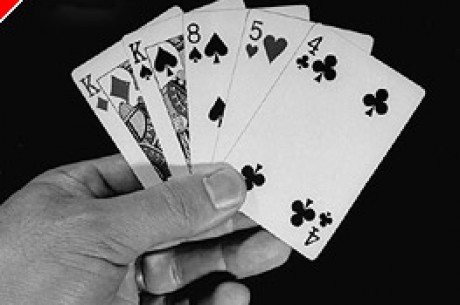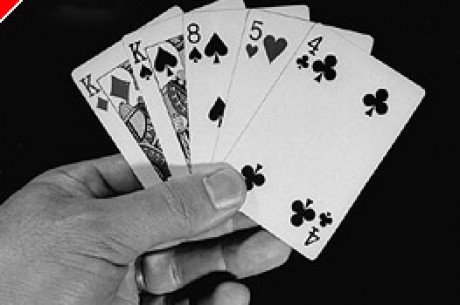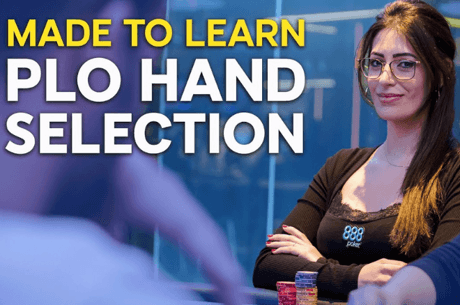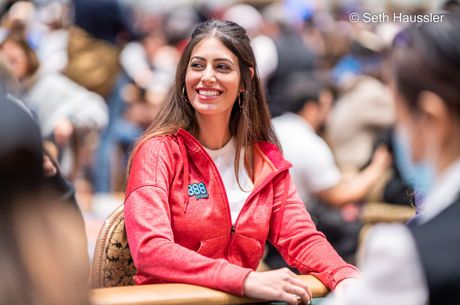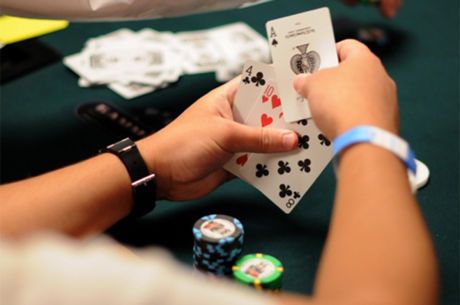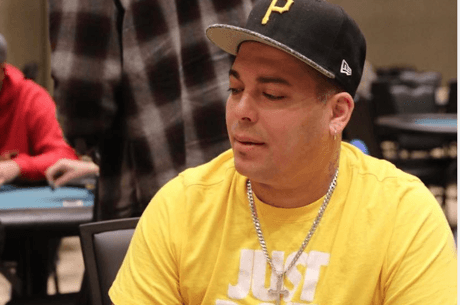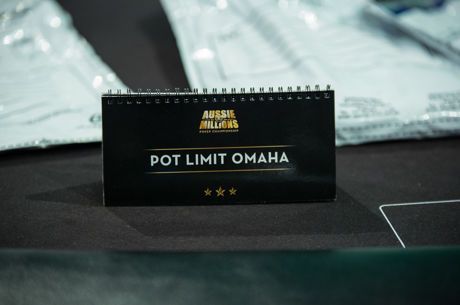Talking Omaha Poker - Case Study, Part One
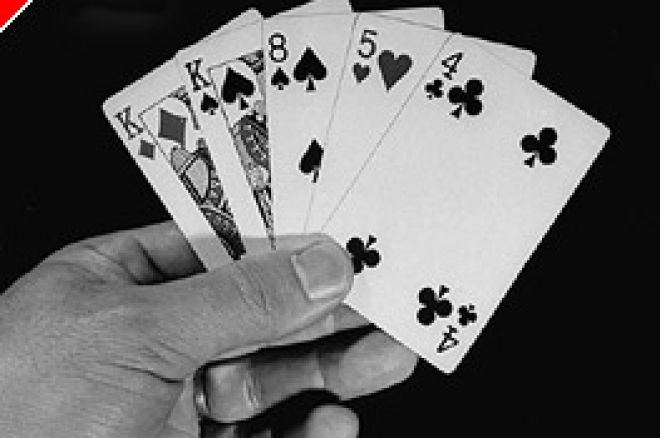
Tony is a regular on-line and card room player living in England. He mostly plays Texas Hold'em and Omaha (High and Hi/Lo) at fixed, pot and no limit, at both cash and tournament tables.
Happy New Year - Same Old Tables
We may be moving into another calendar year but the on-line world of poker is still with us. Now is not the time to relax!
A few months ago, I used this column to commentate through some hands of Omaha played in real-time. This meant that I was publishing the hands I played whether or not I showed a profit or loss. I like that idea because it concentrates my mind and hopefully gets across to the reader the essence of the thinking needed, and also highlights mistakes that can be avoided. In short, a useful learning tool, both for me and you.
So, to kick off the new series of Talking Omaha, I'll run another case study. I think it is important to publish warts and all so this will be a two-part edition.
Low Stakes, Pot Limit
I consider my audience to be new or recent to the variation of Omaha. However, I personally enjoy playing at short-handed tables of 5 or 6 players rather than 10. It also lends itself to a little more action which is probably not a bad idea for newer players as there is a tendency to see too many flops at 10-handed tables where a tighter approach is needed.
On my software, I can enter a 5-handed table of pot limit Omaha High at blind levels of $0.50/1. The maximum stake I can take to the table is $100 so I do so, joining a currently active table with four players.
Because this is short-handed, as a matter of strategy, I would look to raise on the button with moderate hands and be generally aggressive with quality hands from anywhere. Other than that, I should avoid limping in to see flops unless I am on the blinds or one or two fold before me.
To my right there is a German with $150 so he has clearly won a pot or two. To my left is an American with $43, a German with $31 and a UK player with $64. I sit out waiting for the big blind to come to me. This gives me a chance to see a couple of hands played by my opponents. The UK player appears to be aggressive with pre-flop and flop bets. The German to my left actually pot-bet the UK player on the river and got him to fold, then showed a small pair for a fine bluff. This should be interesting.
I will start each hand with its contents and my position, remembering it is a five-handed table. Thus, "under the gun" is also two behind the button so arguably there is no seat which is chronically out of position except for the blinds themselves.
To the Action
Hand 1; Big blind: Qs 5c 4s 2s.
It is flat-called to me so I check. The flop is 2c 5h Js which gives me a 2-pair - a very low one and therefore extremely dangerous in Omaha. I have been burnt too often by these types of hands so I check. The button bets pot $5 and it is called by the small blind. I decide I will play safe and fold. Another calls behind me. Turn is 6c, and a bet of $20 is fired in by the button only to be re-raised $46 by the small blind. The button calls all-in as he cannot meet the bet in full. My fold proves correct as the betting suggests to me that at least one of these players has 4 3 x x in the hole. The small blind takes the hand. The button (UK player) has once again paid for his aggressiveness with less than the nuts.
Hand 2; Small blind: Kd Kc Qc 5c.
It is flat called to me. I decide to raise it to $3 although I am out of position, hoping to narrow the field. Two players call. The flop is Td Qs 3d. I think I am leading but the flop is likely to attract a caller whatever I bet so I open half pot $4. Both call again. Turn is 7c. I could pot bet here to have a go at taking the pot away but I have a sneaking feeling in my water it won't work so I decide to check. It is checked by both. The river is As which deals a blow to my kings. I check again. A bet of $10 is made by the last to bet. I fold and the other calls and takes the pot with A 7 x x, a 2-pair. It is possible I would have taken the pot at the turn with a strong bet but no guarantee of that.
Hand 3; Button; As Ac 9c 8c
This is a nice hand to have on the button. It is flat called $1 to me so I raise to $5. It is called by three of the four opponents including a new player who has $20 in total. The flop is Th 5d Ah. This gives me a set of aces but a possible flush draw for someone. I decide that such a person should pay for the right to draw to a flush and pot bet $21 after everyone checks to me. They all fold and I take a $21 pot away with no sweat. After the early slip, I am now $7 in profit after three hands.
Hand 4; Cutoff; Ks Qc 9s 2d
It has marginal promise but the 2d is a "dangler" (of no use) so discipline says I should fold so I do just that.
Hand 5; Under the gun; Qd 9c 3c 3s
Junk and folded.
Hand 6; Big blind; 8s 6h 6c 4h
I check the flat-calls. The flop is Ts 2c Ah and that is of no use. I see a free turn and river and fold to the first bet.
Hand 7; Small blind; Ad Kh 9c 7c
Not a lot to recommend it in this position but I make up the blinds with 50c. The flop is 6s Qc As, top pair for me. I check and get a free turn. This is the Kd. Someone with J T x x would have the top straight but I have top 2-pair now. I am first to bet and decide to test the water with a $4 pot bet. There is no resistance and I take the small pot. They all count.
Hand 8; Button; Kd Qh Ts 9d
This is an attractive hand on the button so I raise the flat calls to $5. All fold to the German on my right who has the big stack (nearly $200). He calls and we see a flop that is 6c Tc Js. That gives me a good number of outs for a nut straight but I have to watch the clubs. The German checks and I bet pot of $12.50. After a short pause, he folds, so I collect another modest pot with a drawing hand. The benefits of having position on your opponents are many. I now have $115 after 8 hands.
Hand 9; Cutoff; Jc 9d 7h 6s
Some potential but crucial gaps at the top end, I need both a T and an 8 on the board to give me potential for the nut straight. My decision is made easy by a raise by the large stack on the button. Fold.
Hand 10; Under the gun; 9c 7h 5d 4h
Again, any straight potential is hindered by gaps at the top end. In this case, an 8 and a 6 are needed. I fold immediately.
Hand 11; Big blind; Kc Js 7c 6c
Not too promising but I am able to check for the flop. It comes down 8c 9c Kd which fits my hand like a glove. I have an open ended straight flush draw, a second nut flush draw and an open-ended straight draw if there are no further clubs. Plus I have top pair. I open the betting with a pot bet of $4. I have one caller, the new player with a small stack so I have limited downside. The turn is 6s giving me kings up. I bet $10 which is 2/3 of my opponent's remaining stack of $15. He calls. The river is Ts which makes a straight for me with my J and 7. I can be beaten by Q J x x but there is no betting left in this. I bet the remaining $5 and get a call. Yes, he has Q J but frustratingly it is clear he called my $10 bet on the turn because he held Qc 4c so was chasing a flush inferior to mine. Such is life at the Omaha tables! That reverse puts me into a loss for the first time, down $6 at $94 instead of up to around $150. I think I played the hand well and was beaten only by a gut-shot straight hitting the river for my opponent, while avoiding a club.
Onward for recovery
Next week, I will conclude this session at the 5-handed Omaha High pot limit table.
TB
30-12-05
Ed note: Party Poker have multiple tables available at every limit, 24 hours a day.


